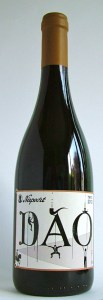Caught in a web: the changing world of the wine critic
Caught in a web: the changing world of the wine critic
First published in The Irish Times, Sat, Oct 3, 2015, 03:00
Wine writer Jancis Robinson had a thought- provoking article in the Financial Times a few weeks ago on the changing fortunes of the wine journalist. Her points could probably be applied to critics in all genres, but she was fairly blunt about the rise and fall of the wine critic. As wine grew in popularity around the world throughout the late 20th and early 21st centuries, new consumers sought out information and advice on what wines to drink. Prior to the internet a handful of top wine writers from a few countries were omnipotent, with the power to make or break a producer, a region or a vintage. These would have included Robinson herself. Their pronouncements were awaited with hope and trepidation by sections of the wine trade, who knew a positive review would make their jobs lot easier. Robert Parker, the high priest of wine critics, went a step further, giving each wine marks out of 100. Not only was this far easier to understand, it also allowed consumers to make direct comparisons between wines.
We now live in a much more democratic age in which everyone can voice their opinions. I can remember a time when most consumers were unwilling to give a view on any wine for fear of being ridiculed. These days the internet is coming down with multiple tasting notes on every wine as well as accounts of visits to various wine regions. Wine Searcher and Cellartracker give you access to thousands of professional and amateur tasting notes, scores and prices. Sitting in a restaurant with an intimidating wine list, you can look up apps such as Vivino on your smartphone and get multiple ratings written by consumers. In this era of social media, everybody has the opportunity to be heard.
Is the opinion of someone who has been tasting and drinking wine for the best part of 30 years any more valid than that of someone who is just discovering wine for the very first time? We all taste wine differently, and we all have personal preferences, even if professional writers try to hide these. As a reader, it is useful to know the foibles of the critic. I usually avoid wines Parker acclaims. It is not that he doesn’t have a phenomenal palate – he does – but he tends to prefer big, rich, powerful wines with lots of new oak, and I don’t.
Some online reviews are obviously well written by genuine wine lovers, many of whom have a very high level of knowledge. Others, you suspect, are being manipulated by outside interests. Apparently restaurateurs are approached by bloggers offering a positive review in return for free meals and drinks. I have been offered a reward for writing a positive review only once; the producer said he regularly paid a number of UK bloggers sums of money, or free trips for a positive write-up. I turned it down, naturally, but I am the recipient of free sample bottles of wine, as well as trips abroad. I suspect many online writers would be delighted to accept these in lieu of payment.
Although I don’t always agree with her I know I would pay a lot more attention to what an expert such as Robinson has to say about a wine than someone who enjoyed a glass in a crowded restaurant. It is the difference between reading TripAdvisor and Paul Theroux. That said, if thousands of consumers give a wine a positive evaluation, obviously it has something going for it. And who am I to say they are wrong?
The fourth edition of The Oxford Companion to Wine, edited by Robinson, has just been published by Oxford University Press.
This week: three outstanding wines that this wine critic enjoyed recently.
Five of Ireland’s leading specialist wine importers will come together to hold a consumers’ wine tasting featuring more than 150 wines. Spit Festival will take place on 29th October in Smock Alley Theatre from 6.30pm. Tickets are €25.
 Dao Rótulo 2012, Niepoort, Portugal
Dao Rótulo 2012, Niepoort, Portugal
12.5%
€16.95
Delicious cool piquant blueberry and damson fruits with a lovely sour streak.
Stockists: Leading specialist wine shops.
 Celler Pardas Rupestris 2013, Penedes
Celler Pardas Rupestris 2013, Penedes
13%
€17.60
Fascinating organic wine with baked gooseberries, peaches and honeycomb, finishing bone dry.
Stockists: 64Wine; Clontarf Wines; Green Man Wines; Baggot Street Wines; Michaels, Deerpark; La Touche, Greystones.
 La Petite Ourse 2013, Côtes du Rhône, Pascal Chalon
La Petite Ourse 2013, Côtes du Rhône, Pascal Chalon
14%
€17.99
No ordinary Côtes du Rhône but a superb rich wine with warming concentrated dark fruits sprinkled spice.
Stockists: Jus de Vine, Portmarnock
Posted in: Irish Times
Leave a Comment (0) →
 e Grand Blanc 2012, Côtes de Thongue, Comte de Bertier
e Grand Blanc 2012, Côtes de Thongue, Comte de Bertier Cusumano Shamaris Grillo 2014, IGT Terre Siciliane
Cusumano Shamaris Grillo 2014, IGT Terre Siciliane Ottomarzo 2012, Tenute Dettori, Sardinia
Ottomarzo 2012, Tenute Dettori, Sardinia Frunza Pinot Noir 2014, Romania
Frunza Pinot Noir 2014, Romania Umbrele Merlot 2014, Romania
Umbrele Merlot 2014, Romania Paparuda Syrah 2013, Romania
Paparuda Syrah 2013, Romania Tio Pepe Palamino Fino
Tio Pepe Palamino Fino La Iña Fino sherry
La Iña Fino sherry Champagne Gaston Chiquet Sélection Brut N.V.
Champagne Gaston Chiquet Sélection Brut N.V. Vilmart Grand Cellier Brut Premier Cru N.V.
Vilmart Grand Cellier Brut Premier Cru N.V. Veuve Cliquot Ponsardin Vintage Rosé 2004
Veuve Cliquot Ponsardin Vintage Rosé 2004 Chinon Les Graviers, Domaine des Clos Godeaux 2014
Chinon Les Graviers, Domaine des Clos Godeaux 2014 Bernard Baudry Chinon Les Granges 2014
Bernard Baudry Chinon Les Granges 2014 Roka Blaufränkisch 2013, Slovenia
Roka Blaufränkisch 2013, Slovenia

 Ch de Nety 2014 Beaujolais Villages
Ch de Nety 2014 Beaujolais Villages
 12.5%
12.5%
 €7.99
€7.99